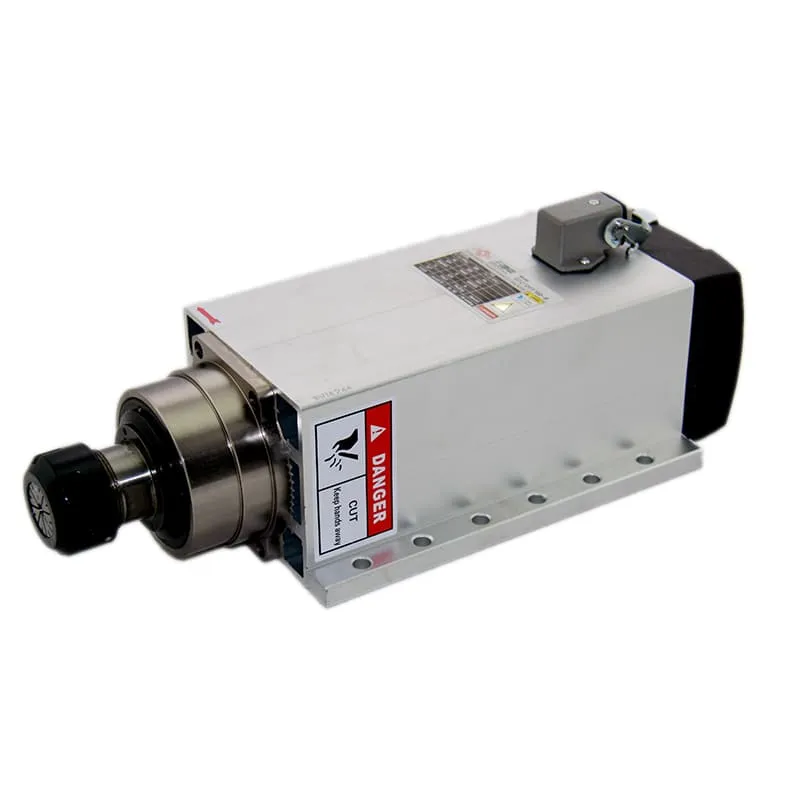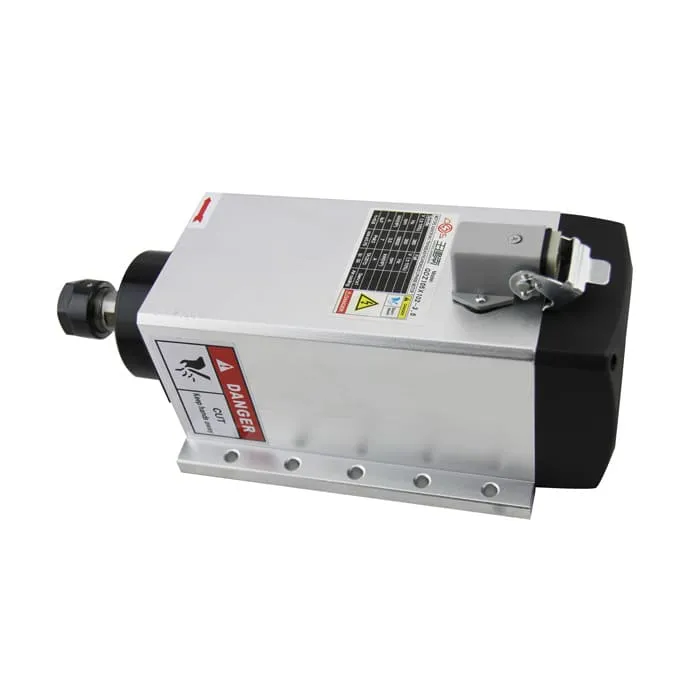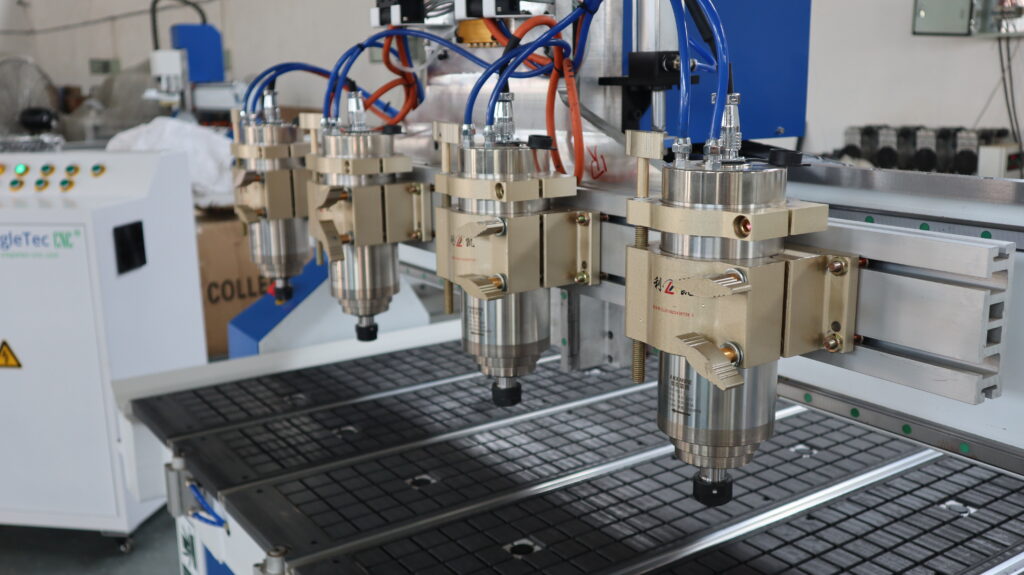Can a CNC Machine Cut Metal?
In the world of manufacturing and fabrication, precision and efficiency are paramount. CNC (Computer Numerical Control) machines have revolutionized these industries, offering unparalleled accuracy and repeatability. A common question that arises, especially for those new to CNC technology, is: can a CNC machine cut metal? The short answer is yes, but there’s much more to explore in terms of capabilities, techniques, and considerations when it comes to CNC machining metal.
Understanding CNC Machines and Metal Cutting
CNC machines are automated manufacturing tools that operate based on computer-programmed instructions. These machines can perform a wide range of operations, including cutting, drilling, milling, and turning. When it comes to cutting metal, CNC machines offer several advantages over traditional manual methods:
- Precision: CNC machines can achieve extremely tight tolerances, often within thousandths of an inch.
- Consistency: They can reproduce the same part multiple times with high accuracy.
- Complexity: CNC machines can create complex geometries that would be difficult or impossible to achieve manually.
- Efficiency: They can operate continuously, increasing productivity.
The ability of a CNC machine to cut metal depends on several factors, including the type of CNC machine, the cutting tools used, and the specific metal being machined.
Types of CNC Machines for Metal Cutting
Various types of CNC machines are capable of cutting metal, each with its own strengths and applications:
- CNC Mills: These versatile machines use rotating cutting tools to remove material from a workpiece. They’re excellent for creating complex 3D shapes in metal.
- CNC Lathes: Ideal for cylindrical parts, lathes rotate the workpiece against a cutting tool to create symmetrical objects.
- CNC Routers: While often associated with woodworking, some CNC routers, especially those equipped with powerful spindles like the 4.5KW ER32 Air-Cooled Spindle, can also cut softer metals like aluminum.
- Plasma Cutters: These machines use a plasma torch to cut through conductive metals quickly.
- Water Jet Cutters: Using high-pressure water mixed with abrasive particles, these can cut through virtually any metal.
- EDM Machines: Electrical Discharge Machining uses electrical discharges to erode metal into desired shapes.

Metals Suitable for CNC Machining
CNC machines can work with a wide range of metals, each presenting its own challenges and requiring specific cutting strategies:
- Aluminum: Often considered the easiest metal to machine, aluminum is soft and cuts quickly.
- Steel: Various grades of steel can be machined, from mild steel to hardened tool steel.
- Stainless Steel: More challenging to cut due to its toughness and tendency to work harden.
- Brass and Copper: These softer metals machine well but can be “gummy” and stick to cutting tools.
- Titanium: Known for its strength-to-weight ratio, titanium is challenging to machine and requires specific techniques.
- Inconel and Other Superalloys: These heat-resistant alloys are among the most difficult to machine.
The choice of metal impacts every aspect of the machining process, from tool selection to cutting parameters.
Cutting Tools for Metal CNC Machining
Selecting the right cutting tools is crucial for successful metal machining. Different tools are designed for specific operations and materials:
- End Mills: Versatile tools used for milling operations in various metals.
- Drills: For creating holes in metal workpieces.
- Turning Tools: Used in CNC lathes for creating cylindrical parts.
- Boring Bars: For enlarging and finishing holes.
- Thread Mills: Specialized tools for creating internal or external threads.
- Face Mills: Large diameter cutters for creating flat surfaces.
The material of the cutting tool is also important. Common options include:
- High-Speed Steel (HSS): Suitable for softer metals and lower speed operations.
- Carbide: Harder and more wear-resistant, ideal for most metal cutting applications.
- Ceramic: For high-speed machining of hard materials.
- Cubic Boron Nitride (CBN): Used for machining hardened steels.
Cutting Parameters for Metal CNC Machining
Successful metal cutting requires careful selection of cutting parameters. These include:
- Spindle Speed: The rotation speed of the cutting tool, measured in RPM. Higher speeds are generally used for softer metals.
- Feed Rate: The speed at which the tool moves through the material. This is balanced with spindle speed to achieve the desired cut.
- Depth of Cut: How deep the tool cuts into the material in a single pass. Deeper cuts remove more material but increase cutting forces.
- Cutting Speed: The speed at which the cutting edge moves relative to the workpiece surface.
Here’s a basic table of recommended cutting speeds for common metals:
| Metal | Cutting Speed (Surface Feet per Minute) |
|---|---|
| Aluminum | 300-1000 |
| Mild Steel | 60-200 |
| Stainless Steel | 40-150 |
| Titanium | 30-100 |
These parameters must be adjusted based on the specific material, tool, and desired finish. A powerful spindle like the 6KW ER32 Air-Cooled Spindle can provide the necessary speed and torque for efficient metal cutting across a range of parameters.

Cooling and Lubrication in Metal Cutting
When cutting metal, managing heat is crucial. Excessive heat can damage both the workpiece and the cutting tool. Proper cooling and lubrication strategies include:
- Flood Coolant: A common method where a large volume of coolant is directed at the cutting zone.
- Mist Coolant: Fine droplets of coolant are sprayed onto the cutting area.
- Minimum Quantity Lubrication (MQL): A small amount of lubricant is precisely applied to the cutting edge.
- Through-Tool Cooling: Coolant is delivered through channels in the cutting tool itself.
- Cryogenic Cooling: Using extremely cold substances like liquid nitrogen for cooling.
The choice of cooling method depends on the material being cut, the cutting operation, and environmental considerations.
CNC Programming for Metal Cutting
Effective metal cutting requires precise CNC programming. This involves:
- CAD (Computer-Aided Design): Creating a digital model of the part.
- CAM (Computer-Aided Manufacturing): Generating toolpaths based on the CAD model.
- G-code Generation: Converting CAM instructions into machine-readable G-code.
- Program Optimization: Fine-tuning the program for efficiency and quality.
Advanced programming techniques like High-Speed Machining (HSM) and Trochoidal Milling can significantly improve metal cutting efficiency and tool life.
Challenges in CNC Metal Cutting
While CNC machines are highly capable of cutting metal, the process is not without challenges:
- Tool Wear: Metal cutting can rapidly wear down tools, requiring frequent replacement.
- Heat Generation: Excessive heat can cause dimensional inaccuracies and tool failure.
- Chip Control: Managing metal chips is crucial for surface finish and tool life.
- Vibration: Excessive vibration can lead to poor surface finish and reduced tool life.
- Work Hardening: Some metals, like stainless steel, can harden as they’re cut, making further machining more difficult.
- Material Variability: Inconsistencies in metal stock can affect machining outcomes.
Addressing these challenges often requires a combination of proper machine setup, tool selection, and cutting strategies.
Advancements in CNC Metal Cutting Technology
The field of CNC metal cutting is constantly evolving. Recent advancements include:
- 5-Axis Machining: Allows for complex geometries to be cut in a single setup.
- Hybrid Manufacturing: Combining additive and subtractive processes in a single machine.
- AI and Machine Learning: Optimizing cutting parameters and predicting tool wear.
- Digital Twins: Virtual representations of physical machines for improved process planning.
- Advanced Materials: Development of new cutting tool materials for improved performance.
These advancements are pushing the boundaries of what’s possible in CNC metal cutting, enabling faster, more precise, and more efficient machining processes.
Safety Considerations in CNC Metal Cutting
Safety is paramount when operating CNC machines for metal cutting. Key considerations include:
- Personal Protective Equipment (PPE): Safety glasses, hearing protection, and appropriate clothing are essential.
- Machine Guarding: Proper guards should be in place to contain chips and prevent accidental contact with moving parts.
- Chip Management: Hot metal chips can cause injury. Proper chip evacuation systems are crucial.
- Fire Safety: Some metals, particularly magnesium, can pose fire risks when machined.
- Training: Operators should be thoroughly trained in machine operation and safety procedures.
- Maintenance: Regular machine maintenance is essential for safe operation.
Applications of CNC Metal Cutting
CNC metal cutting finds applications across numerous industries:
- Aerospace: Creating lightweight, high-strength components for aircraft and spacecraft.
- Automotive: Manufacturing engine components, chassis parts, and custom accessories.
- Medical: Producing implants, surgical instruments, and medical device components.
- Electronics: Creating housings, heat sinks, and precision components.
- Energy: Manufacturing parts for turbines, pumps, and drilling equipment.
- Defense: Producing components for weapons systems and military vehicles.
- Consumer Goods: Creating molds for mass production and custom metal products.
The versatility of CNC metal cutting makes it indispensable in modern manufacturing.
Choosing the Right CNC Machine for Metal Cutting
Selecting the appropriate CNC machine for metal cutting depends on several factors:
- Type of Parts: The geometry and size of the parts you’ll be producing.
- Production Volume: Whether you need high-volume production or flexibility for small batches.
- Materials: The specific metals you’ll be working with most frequently.
- Precision Requirements: The level of accuracy and surface finish needed.
- Budget: Both initial investment and ongoing operational costs.
- Space Constraints: The available floor space in your facility.
- Operator Skill Level: The expertise required to run and maintain the machine.
For many applications, a CNC mill or router equipped with a powerful spindle like the 3.5KW ER20 Air-Cooled Spindles can provide an excellent balance of versatility and performance for metal cutting tasks.

The Future of CNC Metal Cutting
As we look to the future, several trends are shaping the landscape of CNC metal cutting:
- Automation and Robotics: Increased integration of robotic systems for material handling and part changing.
- Sustainable Manufacturing: Development of more energy-efficient machines and eco-friendly cutting fluids.
- Internet of Things (IoT): Connected machines that provide real-time data for process optimization and predictive maintenance.
- Additive-Subtractive Hybrid Systems: Machines that combine 3D printing with traditional CNC cutting.
- Advanced Materials: New metal alloys that require innovative cutting strategies.
- Virtual and Augmented Reality: Use of VR and AR for training, maintenance, and process visualization.
These trends promise to make CNC metal cutting even more efficient, precise, and versatile in the coming years.
FAQs
Can a CNC machine cut hardened steel?
Yes, CNC machines can cut hardened steel, but it requires specialized cutting tools (often made of cubic boron nitride or ceramics) and appropriate cutting parameters. The process is generally slower and more demanding on the machine compared to cutting softer metals.
What’s the thickest metal a CNC machine can cut?
The maximum thickness depends on the specific CNC machine, the metal being cut, and the cutting method. CNC mills can typically handle metals up to several inches thick, while plasma and waterjet cutters can cut even thicker materials, sometimes exceeding 6 inches.
How does CNC metal cutting compare to traditional machining methods?
CNC metal cutting offers greater precision, consistency, and the ability to produce complex shapes more easily than traditional manual machining. It’s also more efficient for producing multiple identical parts. However, traditional methods may still be preferred for one-off parts or very large workpieces in some cases.
Is CNC metal cutting suitable for small-scale or hobby projects?
Absolutely. While industrial CNC machines can be large and expensive, there are many desktop CNC mills and routers suitable for small-scale and hobby metal cutting projects. These machines are more affordable and can still produce impressive results, especially when working with softer metals like aluminum.
How long does it take to learn CNC metal cutting?
The learning curve for CNC metal cutting varies depending on your background and the complexity of the work you want to do. Basic operations can be learned in a few weeks, but becoming proficient in programming, setup, and advanced techniques can take several months to a year or more of regular practice.
Conclusion
Can a CNC machine cut metal? The answer is a resounding yes. CNC machines have revolutionized metal cutting, offering unprecedented levels of precision, efficiency, and versatility. From small hobby projects to large-scale industrial manufacturing, CNC metal cutting plays a crucial role in shaping the world around us.
The ability of CNC machines to work with a wide range of metals, from soft aluminum to hardened steel and exotic alloys, makes them indispensable in industries ranging from aerospace and automotive to medical and consumer goods. The combination of computer-controlled precision, advanced cutting tools, and sophisticated programming allows for the creation of complex parts that would be impossible to produce manually.
However, successful CNC metal cutting is not just about having the right machine. It requires a deep understanding of materials, cutting tools, and machining parameters. It demands attention to safety, proper maintenance, and continuous learning to keep up with advancing technologies.
As we look to the future, CNC metal cutting continues to evolve, with advancements in automation, sustainability, and hybrid manufacturing promising even greater capabilities. The integration of artificial intelligence, machine learning, and the Internet of Things is set to make CNC machines smarter and more efficient than ever before.
Whether you’re a hobbyist looking to explore metal cutting or a manufacturer seeking to enhance your production capabilities, CNC machining offers a world of possibilities. With the right machine, tools, and knowledge, you can turn raw metal into precision parts, intricate artworks, or revolutionary products.
In conclusion, CNC machines are not just capable of cutting metal – they excel at it. They represent the cutting edge of manufacturing technology, continually pushing the boundaries of what’s possible in metal fabrication. As this technology continues to advance, we can look forward to even more exciting developments in the world of CNC metal cutting, opening up new possibilities for innovation and creation across countless industries.

